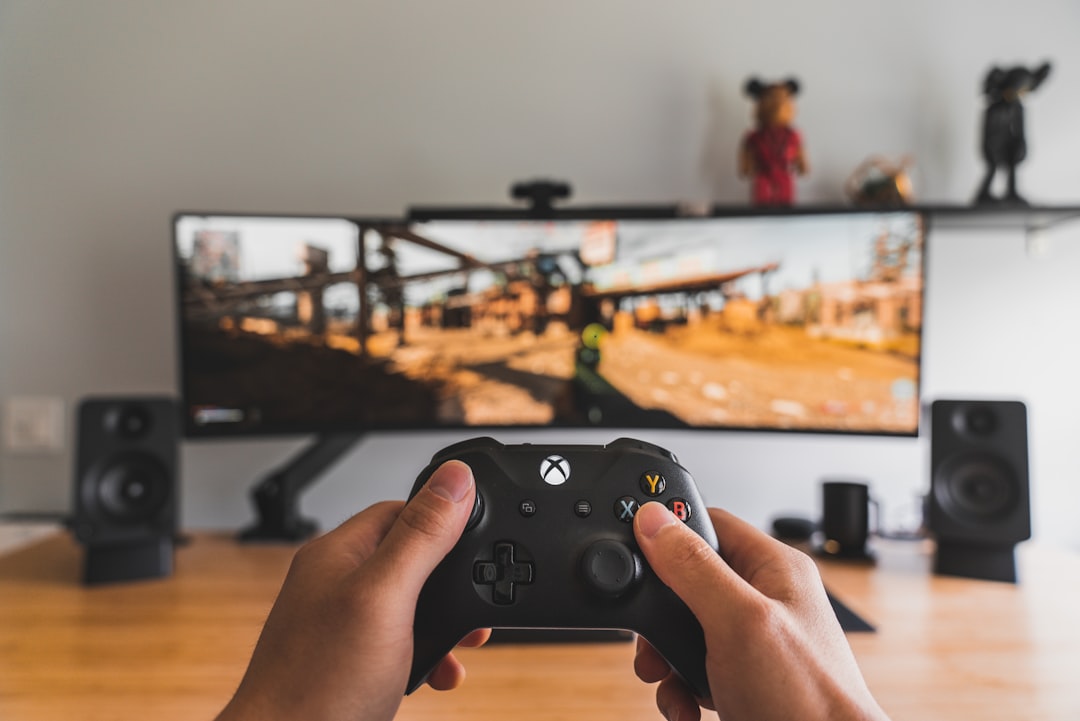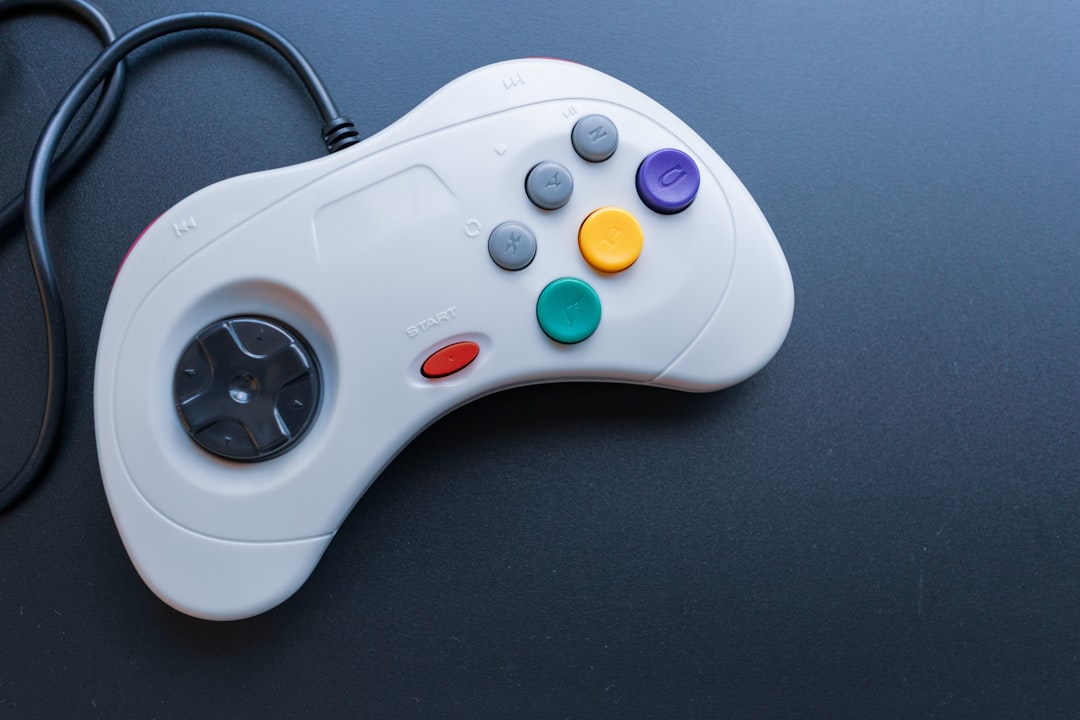Have you ever considered using video game development as a tool for teaching kids to code? With technology becoming increasingly prevalent in our everyday lives, coding is becoming an increasingly important skill to have. It’s not just for computer scientists and software engineers anymore, coding is a skill that can be applied across so many different fields.
However, figuring out how to make coding fun and engaging for children is a challenge. Let’s face it, coding can be difficult and frustrating at times, especially if you’re just learning the basics. That’s where video game development comes in. Using video games as a tool for learning to code is not only more engaging and enjoyable for kids, but it also provides a practical and hands-on approach to learning.
In this blog post, we’re going to explore why video game development could be the perfect solution for teaching kids to code. We’ll look at the positive impact of learning to code at a young age and the benefits of using video games as a learning tool. We’ll also delve into how video game development can foster collaboration and creativity, and we’ll provide you with a selection of the best resources for video game development for kids. Finally, we’ll walk you through a sample video game development project for kids to help you better understand the process.
By the end of this post, we hope to encourage you to consider using video game development as a tool for teaching kids to code. With the right resources and approach, video game development can be a fun and practical way to teach kids the valuable skill of coding, while also fostering their creativity and imagination.
The Positive Impact of Learning to Code at a Young Age
Children are like sponges when it comes to learning new skills. Studies have shown that children who learn to code at a young age have a significant advantage when it comes to problem-solving, critical thinking, and analytical skills.
Learning to code in a fun and engaging way can have a positive impact on a child’s development. When children learn to code, they also learn how to break down problems into smaller parts and work through them methodically, which can help with math skills and improve their ability to plan and organize tasks.
Moreover, learning to code fosters creativity and empowers children to unleash their imagination. As they learn to use code to build their video games, they can explore ideas and experiment with different solutions to programming problems, developing their own approach to problem-solving.
Children who learn to code also develop a valuable skill set and become more confident in their abilities. They can apply what they’ve learned to other areas, such as building websites or developing apps, putting them ahead of their peers in the job market in the future.
Overall, learning to code at a young age provides children with endless possibilities and paves the way for lifelong learning.
.
Engaging Kids Through Play: The Benefits of Video Games as a Learning Tool
Video games are often viewed as a form of entertainment that distracts kids from learning, but the reality is that video games can be used as a tool to teach kids many valuable skills, including coding. Games have always been a way for kids to learn, but with the advent of technology, video games have become an even more powerful tool to engage young learners. By combining learning with play, video games can provide a fun and interactive way for kids to acquire new knowledge and skills.
One of the primary benefits of using video games as a learning tool is that they are highly engaging for kids. When kids are having fun, they are more likely to be motivated and pay attention to what they are learning. With video games, kids are not just passively absorbing information, they are actively engaged in problem-solving, critical thinking, and decision-making. These skills are essential for coding, where the ability to think logically and creatively is paramount.
Another benefit of using video games as a learning tool is that they can be tailored to individual learning styles. Kids have different learning styles, and with video games, they can engage in a learning experience that is tailored to their individual needs. For example, some kids learn better through visual aids, while others may prefer auditory instruction. With video game-based learning, kids can adjust the learning experience to meet their individual needs.
Moreover, video games can help teach kids important collaborative and social skills. Many video games today require players to work together to achieve a common goal. This fosters collaboration, teamwork, and communication skills, which are essential in the workplace. These skills are also valuable in the field of coding, where teamwork and collaboration are crucial components of success.
In conclusion, video games can be an excellent tool for teaching kids coding skills. With the ability to engage kids in a fun and interactive way, cater to individual learning styles, and foster collaboration, video games can create an ideal learning experience for young learners. It’s no surprise that video game development is becoming an increasingly popular choice for parents and educators who want to encourage the next generation of coders and game developers.
For example, some kids learn better through visual aids, while others may prefer auditory instruction.
Creating a Learning Environment: How Video Game Development Can Foster Collaboration and Creativity
When it comes to learning how to code, it’s important to have an environment that fosters creativity and collaboration. Video game development provides just that. Through creating a video game, kids learn how to work together, share ideas, and problem-solve. They also get to exercise their creative muscles by designing their own characters, worlds, and storylines.
Video game development requires different skill-sets from each individual involved in the process. Kids can learn the importance of team-work and delegating tasks. For example, while some may be designing the characters, others may be working on the programming or the sound effects. By working together, they can create a cohesive and fully-functioning game.
Additionally, video game development allows for a lot of experimentation and testing. Kids are encouraged to try out different ideas, and make mistakes without fear of negative consequences. They can learn from their mistakes and use that knowledge to create a better end product.
Furthermore, video game development also provides instant gratification. As they progress in game development, they can see their game come to life step by step. This can lead to a sense of accomplishment and motivation to continue working on the project.
Overall, video game development offers a conducive and enjoyable environment for kids to learn and grow. It allows for collaboration, creativity, experimentation, and instant gratification. These skills can translate to other areas of life, making it a valuable tool for teaching kids to code.
They also get to exercise their creative muscles by designing their own characters, worlds, and storylines.
Tools That Make Coding Fun: The Best Resources for Video Game Development for Kids
While teaching kids to code may seem like a daunting task, it can actually be a lot of fun with the right tools. Video game development can be particularly engaging for kids because it allows them to see tangible results and encourages them to be creative.
There are many resources available for video game development that are specifically designed for kids. Here are some of the best tools and platforms that can make coding fun for kids:
1. Scratch: Scratch is a coding platform developed by MIT that is specifically designed for kids. With Scratch, kids can learn to code by creating interactive stories, animations and games. The platform is user-friendly and provides a visual programming language that makes coding easy for beginners.
2. Roblox: Roblox is a popular gaming platform that allows users to create their own games and play games developed by other users. While Roblox is not specifically designed for teaching kids to code, it is a great tool for kids who enjoy gaming and want to learn more about video game development.
3. Code.org: Code.org is a non-profit organization that provides resources and tools to help kids learn to code. Their video game development platform, called Game Lab, allows kids to create games using block coding. They also offer a variety of coding courses and tutorials for kids of all ages.
4. Tynker: Tynker is a coding platform that provides games and challenges to help kids learn to code. Their video game development course teaches kids how to create different types of games, including platformers, puzzles and arcade games. Tynker also provides a visual coding language that makes coding easy for beginners.
5. Unity: Unity is a professional-grade game engine that is widely used in the video game industry. While it may seem too advanced for kids, Unity actually provides a user-friendly interface that makes it easy for beginners to get started with game development. Unity also offers a variety of free resources and tutorials for beginners.
By utilizing these resources, teaching kids to code through video game development can be a fun and engaging experience. These tools not only make coding more accessible for beginners, but they also allow kids to see the results of their hard work in the form of a playable game.
org is a non-profit organization that provides resources and tools to help kids learn to code.
From Start to Finish: Walkthrough of a Sample Video Game Development Project for Kids
In this section, we’ll take a look at a sample video game development project that kids can tackle to get started with coding. This particular project will focus on using a free game development engine, Construct 3, to create a simple 2D platformer game that can be easily customized with graphics, sound effects, and gameplay mechanics.
The first step is to have the kids download Construct 3 and go through a few beginner tutorials to get comfortable with the interface and basic concepts of game development. From there, they can move on to creating their own game.
The first task is to design the game’s environment and platform. This can be done using Construct 3’s built-in asset library or by importing custom graphics. Next, the kids can add the game’s main character, enemies, and collectible items, each of which can be customized with unique behaviors and properties.
Once the game’s visual elements are in place, the kids can begin working on the game’s logic and gameplay mechanics. They can use Construct 3’s event system to define things like collision detection, movement, and scoring. They can also add sound effects and music to give the game an extra layer of immersion.
Throughout the development process, the kids can test and refine their game, making adjustments as needed. Once the game is complete, they can share it with friends and family or even publish it on game development platforms like itch.io.
By working through a project like this, kids can gain a firsthand understanding of the coding concepts involved in game development, such as logic, problem-solving, and design. And best of all, they’ll have a fun and engaging end product to show for their hard work.
Overall, using video game development as a way to teach coding to kids is a win-win scenario. Not only will they learn fundamental coding skills, but they’ll also become more engaged and motivated learners in the process.
From Start to Finish: Walkthrough of a Sample Video Game Development Project for Kids
In this section, we’ll take a look at a sample video game development project that kids can tackle to get started with coding.
Conclusion: Encouraging the Next Generation of Coders and Game Developers through Video Game Development for Kids
Video game development has proven to be a fun and engaging way for kids to learn coding skills. As we’ve explored in this blog post, learning to code at a young age can have a positive impact on a child’s development and future career prospects. By engaging kids through play and creating a collaborative learning environment, video game development can foster creativity, problem-solving skills, and teamwork.
Moreover, video game development tools, such as Scratch and Kodu, have made coding more accessible and fun for kids, without sacrificing the educational value. With these tools, children can create their own unique video games from start to finish, while learning programming concepts along the way.
By encouraging the next generation of coders and game developers through video game development for kids, we can help prepare them for a future that is increasingly fueled by technology. It’s important to continue to provide resources and opportunities for children to learn to code, and video game development is an excellent way to do so.
Overall, video game development is the perfect solution for teaching kids to code. It’s fun, engaging, and educational, and it can help prepare children for a future that is more reliant on technology than ever before. So let’s encourage the next generation of coders and game developers through video game development for kids, and watch as they unlock their full potential.





